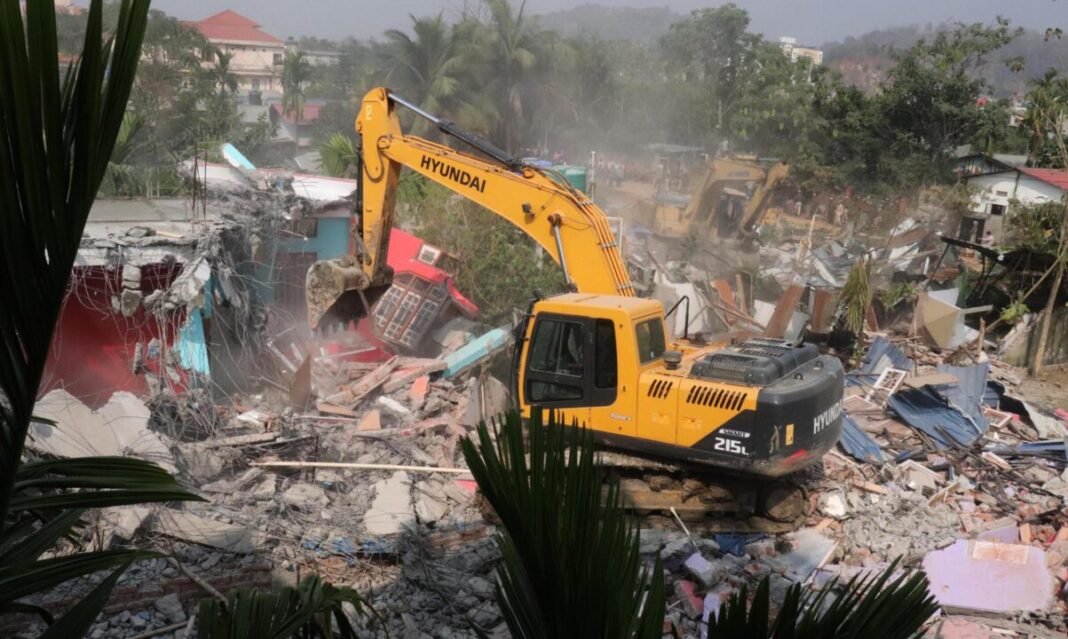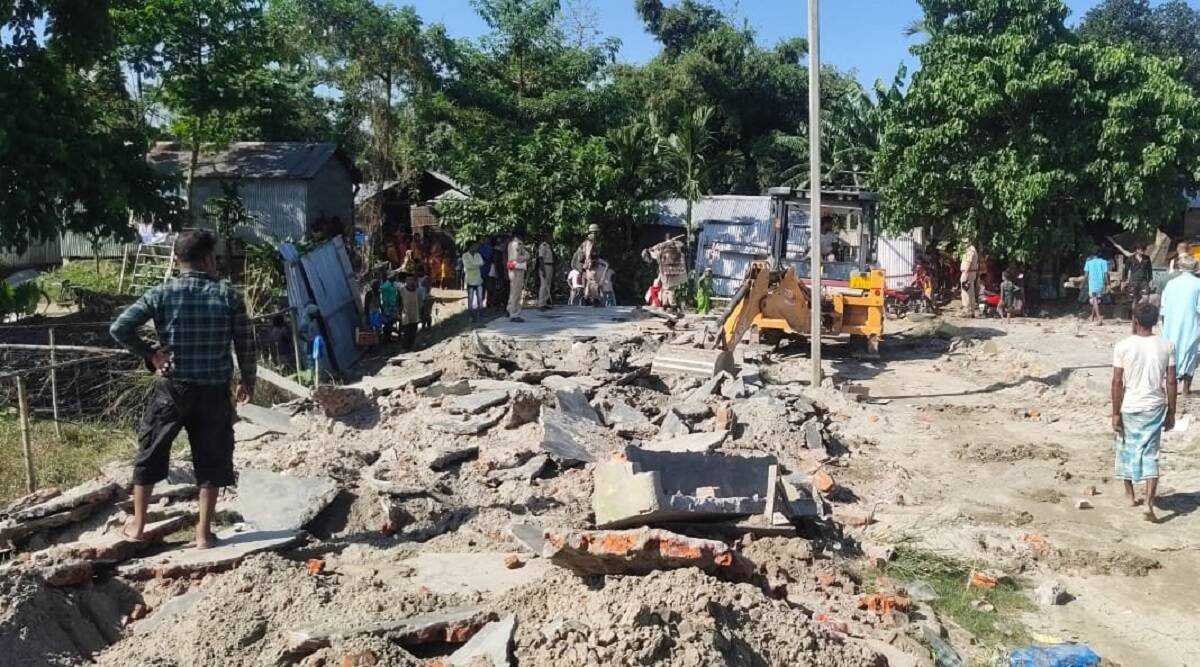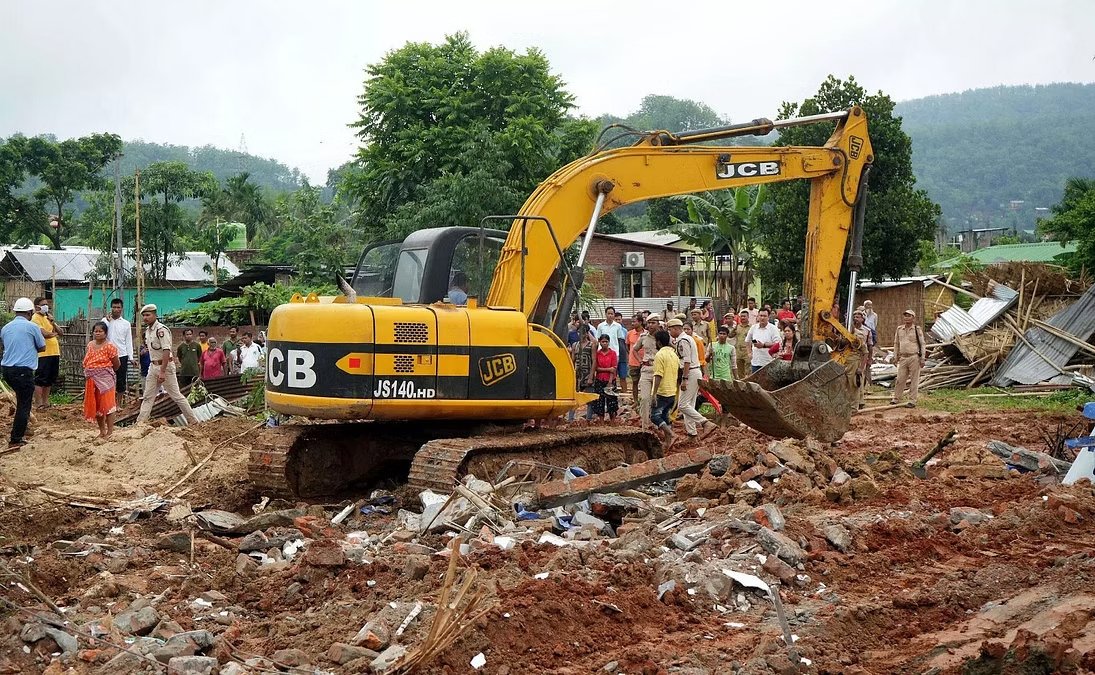GUWAHATI, March 12 (PTI): The Assam government will acquire 179 bighas (59 acres) of land allotted to 17 institutions that will be evicted from Silsako Beel (lake) in Guwahati, an official order stated.
The institutions to be evicted include Tata Group’s Ginger Hotel, apex literary body Asam Sahitya Sabha and residential units of the state assembly and Doordarshan Kendra.
The state government faced flak from the public and opposition during a recent eviction drive at the lake.
After the acquisition process is over, the buildings will be demolished like many structures that were brought down for several days since February 27 by the Kamrup Metropolitan District authorities.
“The Assam government will acquire a total area measuring 179 Bighas and 17 Lecha (59 acres) in the Silsako Beel area, currently allotted to 17 institutions/organisations,” an official said citing the order issued on Saturday.
Some other institutions whose legally allotted land will be acquired are Omeo Kumar Das Institute of Social Change and Development (OKDISCD) — an autonomous research institute of ICSSR and Government of Assam, and the Chilarai Bhawan of All Assam Koch Rajbongshi Sanmilani.
Land parcels given to All Assam Tennis Association for a tennis complex, Asam Sahitya Sabha, National Institute of TV and Theatre, one veterinary hospital, and Assam Assembly and Doordarshan Kendra for building residential quarters for their staffers will also be cleared.
The list of 17 institutions also contains several schools, one college and land allotted to Asom Saah Shramik Kalyan Parishad.
During the recent eviction drive in the heart of the capital city, scores of houses, offices and shops were pulled down by the administration.
Most of the people affected in this drive are from indigenous communities such as Bodo, Mising, Karbi, Ahom and Bishnupriya Manipuri among others, unlike the victims of previous drives in other parts of the state being predominantly Bengali-speaking Muslims.
The opposition had termed the entire eviction exercise as “inhuman” and appealed to the government to stop it as hundreds of students were “deeply affected” due to the board examinations of Class 10 and 12.
However, chief minister Himanta Biswa Sarma had defended the action and said the area under the eviction at Silsako Beel would be expanded gradually.
Initially, the authorities had planned to target only around 450 buildings within 100 metres on both sides of the Silsako lake, which was around 400 bighas (over 132 acres), but the government later expanded the exercise to make the entire water body free from encroachment.
The government in 2008 had declared Silsako Beel, surrounded by Chachal, Hengerabari, Pathar Quarry and Satgaon areas, a protected water body in Guwahati through an Act and prohibited any construction or settlement in around 1,800 bighas (over 595 acres) of the lake area.
As per Guwahati Metropolitan Development Authority (GMDA) chairman Narayan Deka, less than 300 bighas of the lake remained free from encroachment and the waterbody was reduced to a “small pit”.
“This is one of the main reasons for water logging in the eastern part of Guwahati city during the monsoon season,” he had claimed.
On March 2, the Kamrup Metropolitan district administration issued an order to demolish as many as 89 bridges over Bahini river along an approximately 8 km stretch in Guwahati to ease water logging problems in a part of the city.
However, the order was modified on March 6 and said 26 bridges will be demolished instead of 89 after the district authority and the state government were slammed by the opposition and social media users.
The Himanta Biswa Sarma-led dispensation has been carrying out eviction drives in different parts of the state since it assumed power in May 2021. In the last three months, several major eviction exercises have taken place.
In one of the largest eviction drives in Assam, the administration, in a three-day exercise from February 14, cleared 2,099 hectares in Burachapori Wildlife Sanctuary and nearby revenue villages in Sonitpur district, affecting almost 12,800 people.
On February 15, in Digboi of Tinsukia district in Upper Assam, security personnel resorted to lathi-charge when alleged encroachers of railway land pelted them with stones to prevent an eviction drive there. The Northeast Frontier Railway evicted around 200 houses and shops.
In Barpeta district’s Bhabanipur on the same day, the district administration carried out an eviction drive to clear nearly 300 hectares of land belonging to Gopal Dev Aata Satra, a Vaishnavite monastery.
In Pava Reserve Forest under Lakhimpur district, the administration had started an eviction drive to clear 450 hectares of encroached land on January 10, which continued for several days, displacing around 500 “illegal settler” families. Also, a large area of the forest-turned-agricultural land was also cleared.
The drive in Nagaon’s Batadrava on December 19 was billed as one of the largest in the region as it uprooted more than 5,000 alleged encroachers. It was followed by another exercise on December 26 to clear 400 bighas in Barpeta.
Setting aside opposition criticism, Sarma had on December 21 told the assembly that eviction drives to clear government and forest lands in Assam would continue as long as the BJP is in power.







